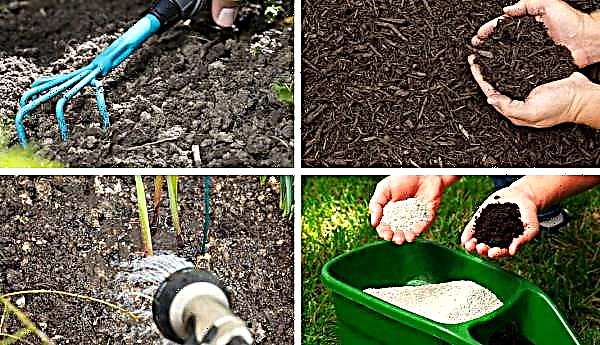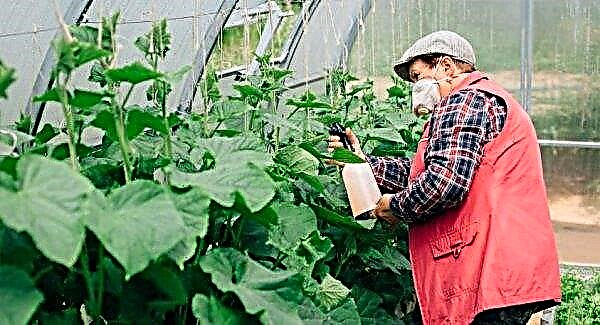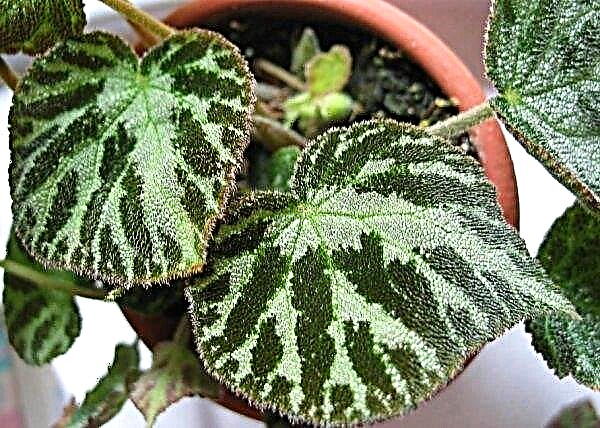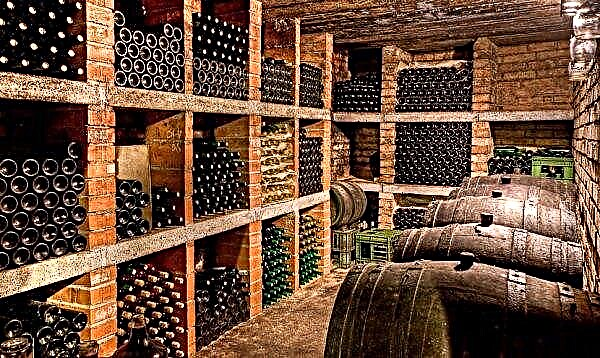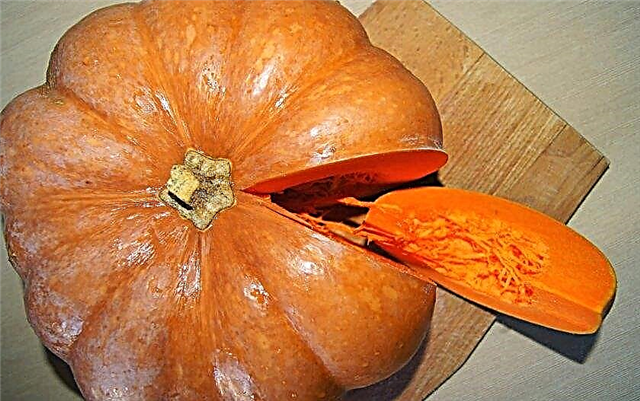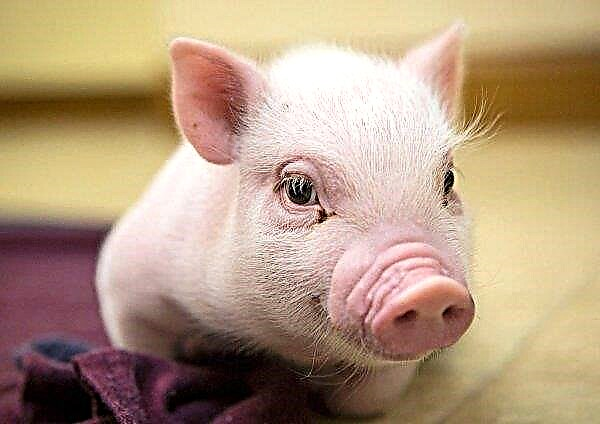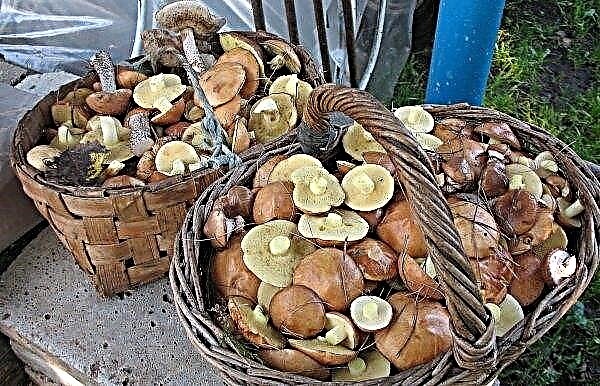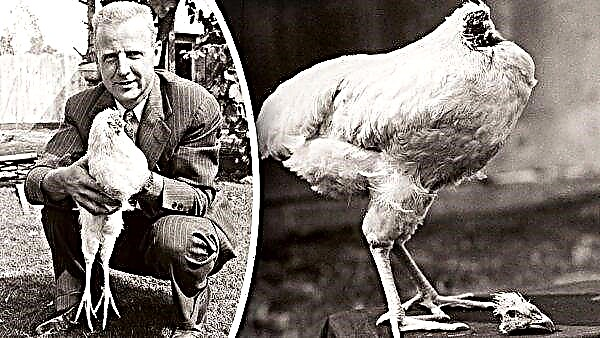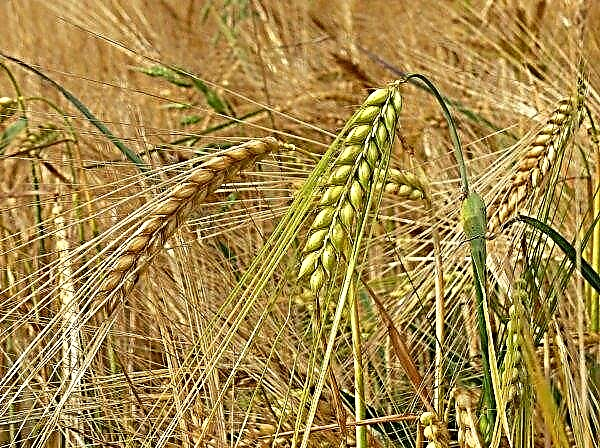Juniperus ordinary Compressa is a dwarf narrow-vertical variety with light green, slightly prickly needles. It has such a dense branching that the crown seems completely solid. The plant looks like a small exclamation point. The variety is ideal as an accent plant in landscape design. Read more about Juniper Compress, its features and the rules for caring for it, read further in the material.
Botanical Description
The growth habits of common juniper depend on factors such as:
- geographical location of the region;
- air temperature;
- the degree to which nutrients affect the plant.

Most often it is represented by multi-stemmed shrub forms that grow in Europe, North America and Asia.. Less commonly, with single-barrel forms. Their spiky, green needle-shaped juvenile leaves grow in whorls of three. On each surface of the sheet there is a transparent stomatal strip. The bark is often described as gray-red, with a habit of peeling.
In April-June, male yellow cones appear on the juniper, and after them female, spherical, up to 1 cm in diameter. They are called juniper berries. Immediately after the appearance, they are green, but by autumn they become blue or black. Juniper berries are widely used for making gin.
Important! Juniper shoots, or rather, its essential oils repel moths. They can be placed next to winter items, which are stored in the spring.
Variety Characteristics
Like many old selection samples sold in nurseries, the quality of Compressa seedlings may vary. The "correct" adult plant should be 50-60 centimeters high and 15-20 centimeters wide. But often come across instances that grow taller. They are easy to distinguish by sparse crown. This is due to the fact that more rapidly growing plants are chosen for propagation, but at the same time they lose the famous crown density.
Juniperus Compressa (Juniperus communis Compressa) was originally described by botanists Eli-Abel Carrier and Alfred Raeder in 1949. But from the descriptions of the nurseries of the 1850s, we can conclude that this plant was already in their collections, but under other names.
Variety Description:

- a type: evergreen shrub;
- family: Cypress (Cupressaceae);
- height: up to 3 m;
- width: up to 0.35 m;
- crown shape: narrow-columned;
- growth habits: slow-growing with annual growth of 5–8 cm;
- needles: 4–6 mm, thin, slightly spiky, green in summer, acquires a slightly bronze hue in winter;
- the soil: wet, may be depleted in nutrients;
- acidity: any;
- application: alpine hill, rock garden;
- winter hardiness: up to -35 ...- 40 ° С;
- features: tolerant of drought, stony soil and urban conditions.
Landing and further care
The variety is intended for planting in a sunny area. Although some shading is allowed. If there are several bushes, then the distance between them should be from 0.5 to 2 m.
The type of soil can be any. But if it is poor in nutrients, it is necessary to add organic fertilizers during planting: compost, peat, rotted manure or others.
Important! Some species of juniper are poisonous. The plant poison that they contain causes severe poisoning and miscarriages in animals.
The plot is cleared of weeds. They remove stones, break up large clods of earth. Dig the soil to a depth of 40 cm. Prepare landing pits. The soil removed from them is mixed with turf soil and peat in equal parts. You can add sand for friability and needles, which will serve not only as a means for fluffing up the soil, but also as a long-playing fertilizer.
Step-by-step landing instructions:
- The size of the pit should be 2-3 times the diameter of the root ball.
- The bottom layer is laid drainage. It should remove excess moisture from the roots. Therefore, its thickness is about 15–20 cm.
- A prepared substrate is laid on top of it.
- The seedling is soaked for 12-24 hours in a growth stimulator. Then they plant it in a pit and add soil so that the root neck is at the same level as in the nursery.
- Compact the soil around the trunk.
- Abundantly watered with water. 1-2 buckets are enough.
- During the first 2 weeks, watering is carried out every other day.
- Barrel circle sprinkled with mulch. It will prevent weed growth, soil compaction and rapid evaporation of moisture.

Breeding methods
Gardeners propagate juniper cuttings. To do this, cut a healthy shoot in May. Its length should be about 15 cm. Prepare a pot and nutritious soil. It can be a substrate from a store for conifers or a mixture of peat, sod land, vermiculite and quartz sand in equal quantities. The end of the handle is moistened in "Kornevin." The soil is watered with a pale pink solution of potassium permanganate. Make a hole with a pencil and plant a stalk in it.

Cover with a film. But they do it so that the film rests on the supports. For example, on sticks, and not on the stalk itself. The plant is installed in a room with a temperature of +20 ... + 21 ° C for rooting. Periodically check the humidity and water the ground. Rooting time - about 3 weeks. Then the film is removed, and the seedling is grown indoors until the spring of next year, when it can be planted in the ground at a constant place.
Did you know? The oldest juniper bush grows in the Crimea. Botanists believe that he is already 2,000 years old.
Juniper propagation is another way.. But it is impossible to apply it to the Compress variety, since it has only one trunk. And there is no way to press one of the branches to the soil to root and form a new plant.

The next method of propagation is by seed. For this, juniper berries are harvested from September to December. Mature, they should be uniform blue with a wax coating. Cones are very resinous, so getting seeds is quite difficult. To do this, put them in a blender and add a little warm water. Now stir at low speeds. Once the berries are cracked, add more water. Leave on for 5 minutes. All that has surfaced must be thrown away. Good seeds at this point will sink to the bottom of the tank. They need to be removed, allowed to dry and put into a paper bag for storage.
Before planting they are set to sprout, as well as the housewives do with the seeds of cucumbers. Prepare a landing container. The first layer is laid drainage of small stones. Then 50% of compost without leaves or peat and 50% of sand are poured into it. Lay the seeds on the surface. Watered. Press them to the soil. Sprinkle sand on top.
The pot is put in a shady place in the fresh air. Do not hurry. It takes 6 months to wait for seed germination. During this time, the pot needs to be watered if the soil dries up and is protected from birds that can detect seeds and eat them. When winter comes, the container should also remain outside. Conifers need a mandatory period of cold treatment (stratification). Such a period should last about 120 days.
In spring, seeds can be transplanted each in a separate pot or left to grow together, if there is enough space for them. Seedlings care will consist of regular watering. When the seedlings grow to 10 cm and leaves appear, they are transplanted to a constant place of growth.

Use in landscape design
A standard or classic composition consists of 2-3 upright Junipers of the Compress type and 1-2 small coniferous bushes at their foot. This composition has been popular since the 70s.
A more modern combination is an upright juniper among heather or alpine plants.. Also, Compress will look good in a rock garden as an accent plant. You can replace heather with ferns. This gives the composition the effect of forest wilds. You can try planting other forest plants around Compresses: phyllodoce, calcium, Erica, dwarf rodendrons.
The narrow shape of the crown will help in creating a seaside landscape. It will look great if you lay out the paths with gravel and plant Compress along them. In order to add colors to the garden, you can shade the juniper with bright spring bulbs.

Diseases and Pests
If a variety is planted in the right place and provided with proper care, including watering and top dressing, it rarely gets sick. But there are several common diseases that can cause darkening of needles and death of shoots.
In February, the intensity of sunlight increases. Therefore, the juniper growing on the south side of the buildings can get sunburn. As a result, the needles dry out and begin to die. To solve the problem, in February near such plants a screen made of lutrasil or other material is installed. He must cover the plant from the sun.
Did you know? According to the observations of geologists in the natural environment, juniper often grows where there are coal deposits.
In the summer, you may find bright orange blisters on the branches. Then the needles turn brown and crumble. it rust. It can hit needles and cones. For the prevention of the disease in spring, the tree is sprayed with "Arseridum" (50 g per 10 l of water). If there are signs of the disease, then the treatment is repeated up to 4 times at 10-day intervals. Sick branches must be destroyed. In wet weather they are actively developing Fusarium fungi. If the plant is infected, then starting from the top down, the needles acquire a reddish hue. The branches dry, and then the tree itself dries. This is tracheomycosis. During treatment, diseased branches need to be removed and burned, and the plant treated with “Quadrice”, “Fitosporin”. The treatment is repeated after 7-10 days.
In wet weather they are actively developing Fusarium fungi. If the plant is infected, then starting from the top down, the needles acquire a reddish hue. The branches dry, and then the tree itself dries. This is tracheomycosis. During treatment, diseased branches need to be removed and burned, and the plant treated with “Quadrice”, “Fitosporin”. The treatment is repeated after 7-10 days. Branch drying possibly due to various fungal diseases. This contributes to the high density of the crown. In this situation, the diseased branches are cut, and the tree is treated with preparations of Skor, Ridomil Gold.
Branch drying possibly due to various fungal diseases. This contributes to the high density of the crown. In this situation, the diseased branches are cut, and the tree is treated with preparations of Skor, Ridomil Gold. Schütte brown - Another common disease. The color of the needles changes to brown, it dies and falls off. And at the end of August, black fruiting bodies of the pathogen fungus appear on it. The disease affects those plants that are in the shade or in very humid places. The fight against pathology will be standard: removal of diseased branches and spraying with Skor, Ridomil or another fungicide.
Schütte brown - Another common disease. The color of the needles changes to brown, it dies and falls off. And at the end of August, black fruiting bodies of the pathogen fungus appear on it. The disease affects those plants that are in the shade or in very humid places. The fight against pathology will be standard: removal of diseased branches and spraying with Skor, Ridomil or another fungicide.
Pests are doubly dangerous. Firstly, they suck out the juices, which makes the plant weaken. And secondly, phytopathogens penetrate into the plants through damaged places, increasing damage. And this can cause the death of juniper. To combat them, fungicides are used.
Did you know? Juniper bark was used by the Slavs for making dishes. It did not sour milk even for several days.
Pests and control measures:
- Aphids - small brown insects that settle in colonies on young shoots. Length - up to 1.7 mm. A small number of them can be brought down by a strong stream of water. But if there are a lot of pests, spray with a solution of insecticidal soap (10 g / 1 l).

- Shields look like small brown scales on the trunk and branches. They also eat juice. A small number of insects are removed from the branches with a brush. The problem is that the chitinous shell of adult scale insects cannot be treated with insecticides. After the adults have been removed from the branches, spray Aktara, Calypso or Angio. Repeat treatment after 2 weeks to destroy the pests hatched from eggs.
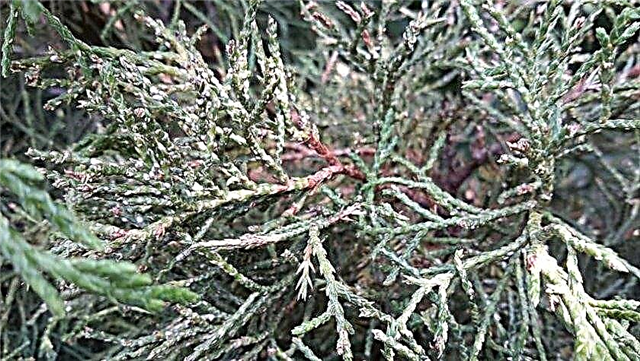
- On needles can also be found caterpillars. These are the larvae of the juniper moth. She lays her eggs in whorls. And the hatched larvae feed on needles, gnawing it from the inside. For treatment, spraying with "Confidor" or "Calypso" is used. The first treatment is carried out in May before the start of the flight of butterflies, the second, with an interval of 2 weeks.

- Powdery plaque on branches and needles is mealybug. These are miniature insects up to 3 mm, which massively settle on young branches. To combat them spend spraying with the drug "Enzhio" in 3 treatments with intervals of 10 days between them.

The Compressa variety is perfect for landscaping private plots, urban squares and territories near buildings, including cafes, restaurants, shopping centers and others. It is unpretentious and can tolerate light drought, city air and frost. And this provides the plant with well-deserved popularity.





